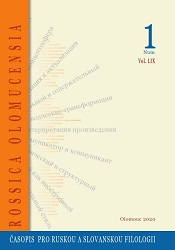
Марія Львівнa Дружинець Українське усне мовлення: психо-та соціофонетичний аспекти
Марія Львівнa Дружинець: Українське усне мовлення: психо-та соціофонетичний аспекти. Одеса, Одеський нац. ун-т, 2019, 580 с., ISBN 978-617-689-344-8
More...We kindly inform you that, as long as the subject affiliation of our 300.000+ articles is in progress, you might get unsufficient or no results on your third level or second level search. In this case, please broaden your search criteria.

Марія Львівнa Дружинець: Українське усне мовлення: психо-та соціофонетичний аспекти. Одеса, Одеський нац. ун-т, 2019, 580 с., ISBN 978-617-689-344-8
More...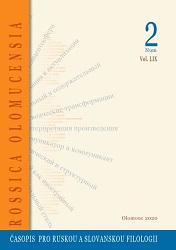
The review of: Аллa Петрівнa Романченко: Елітарна мовна особистість у просторі наукового дискурсу: комунікативні аспекти. Одеса, Одеський національний університет імені І. І. Мечникова, 2019, 541 с., ISBN 978-617-689-334-9.
More...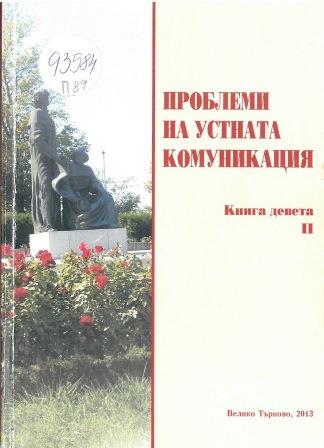
The text examines the possibilities to create an ironic tone in the media discourse by repeating and distorting the words of the person speaking. The paper analyzes the means to ironize others in journalistic comments. The different language levels are consistently explored. It is shown that a critical look at current public policy uses indirect argumentation based on the familiar principle of science – reductio ad absurdum. The stylistic means of expression and evaluation are explored.
More...
Attention is directed to two different phenomena to demonstrate the possibilities for future studies and interpretation of data and results of questionnaires and field surveys within the project “Models and tools in different speech situations and areas of communication in contemporary Bulgarian language”. Language attitudes and actual use were derived on the basis of assessment and verification of the data by comparing the results of the field surveys.
More...
The article discusses the psycholinguistical mechanism of one type of tautology in verbal speech – in phrases or structures made up of domestic and foreign word. As the exact meaning of the foreign words is often not known, a domestic word is sometimes placed next to them and has a defining function; the domestic word duplicates the meaning of the foreign word, because of the expression of which it is borrowed. Sometimes this phenomenon occurs because of a fear of misunderstanding of the foreign word by the listener or from an aspiration by the speaker to underline the real meaning. The process is part of a semantic adaptation of foreign words.
More...
Truth as a way of interpreting the world is defined as a reflection of phenomena, objects, and the regularities in human consciousness. It is relative because of the dynamics of things and the subjective way of perceiving them. In the sphere of comic the pretended violation of the Grice’s principle of co-operation is compensated by ironical signs suggesting the truth.
More...
In the present paper the author discusses the actual state of the pragmatic clichйs wishes which are an original mark of the Bulgarian language community. Special attention is paid to the reasons for the substitution of the traditional pragmatic idioms by adjective combinations which have the characteristic of a wish. The new formulae with the meaning of an ending of a conversation are a result of the new social conditions, on the one hand, and on the other – of the inflation of the linguistic instruments.
More...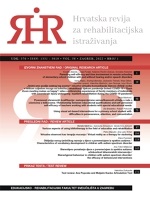
Autism Spectrum Disorder (ASD) is a neurodevelopmental disorder primarily characterised by deficits in social interaction and communication. Based on some theoretical approaches, these deficits provide an unstable foundation for language acquisition. In the earliest stages of language development, this may be reflected in the vocabulary development of children with ASD. Possible deviations in vocabulary development have been investigated at the level of rate of word acquisition and vocabulary composition. Although studies have confirmed that there is significant variability in the language abilities of children with ASD, in many cases, these children experience a delay in the production of first words and acquire words at a slower rate. As a result, the size of their vocabulary is often smaller than expected based on their chronological age. A small body of research points to possible deviations in vocabulary development (i.e., developmental trajectories of specific word classes). Vocabulary composition differs to some extent in typologically different languages, suggesting that vocabulary development in children with ASD needs to be studied in different languages. For Croatian, there is currently no information on the vocabulary development of children with this disorder. Based on a review of literature, this paper highlights important methodological implications for further research on vocabulary development, as well as clinical implications for speech therapy interventions aimed at supporting language development in children with ASD.
More...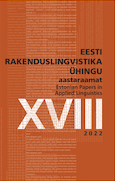
The aim of this paper is twofold. First, to compare the comprehension of complex Lithuanian syntactic constructions (relative clauses, passive sentences, wh-questions) in typically developing (TD) children and children with developmental language disorder (DLD). Second, to display the characteristics of comprehension of these constructions that can be attributed to specific language features of Lithuanian. This study demonstrates that both TD children and children with DLD have problems in comprehending passive sentences and wh-questions. TD children had fewer challenges in performing the relative clause comprehension task than the other tasks. However, children with DLD faced more difficulties in performing the relative clause task. The results show that children are more likely to make errors in interpreting object but not subject sentences. Even though in Lithuanian syntagmatic relations are marked by inflections, it is still difficult for children to grasp the syntactic relations between the subject and the object in complex constructions.
More...
In this article, the development and verification of the A.A. Leontiev–T.V. Akhutina model of speech production based on L.S. Vygotsky’s ideas is discussed. The conceptual and experimental background of L.S. Vygotsky’s theory of speech thinking is analyzed. The ideas of this theory opened the way to a prudent approach to understanding the controversy in psycholinguistics of the 1960s–1970s (works by A.A. Leontiev), A.R. Luria’s findings in aphasiology, and the results of T.V. Akhutina’s research in the field of agrammatism. This determined, in many ways, the specifics of the general framework of the model. The major psycholinguistic concepts elaborated in the 1970s are considered, i.e., those introduced by Ch. Fillmore, C. Lee and S. Thompson, J. Bruner and E. Bates, all shedding light on the syntactic operations of the model. The verification of these ideas in the studies describing syntax in children’s speech, “pidgin” and creole languages, etc. is carried out. The recent observations of the problem being studied at the intersection of linguistics, psychology, and neurosciences are summarized. Particular attention is paid to R. Jackendoff and E. Wittenberg’s review of “linear” languages, as well as to the experimental studies by R. Tomlin, A. Myachikov, A. Konopka that fit with the A.A. Leontiev–T.V. Akhutina model of speech production. The conclusion is made about the high explanatory potential of L.S. Vygotsky’s ideas and the model based on them.
More...
This article describes the results of an attempt to examine the auditory and speech abilities of children with learning difficulties using online tests. A total of 307 children (1 to 7 graders), all facing problems while writing and reading, took part in the experiment. The consistency of auditory and speech tests performed during the neuropsychological and speech therapy practices was analyzed. The following tests were selected: memorizing 10 words, repeating syllables with oppositional consonants, and repeating desemanticized stimuli (nonwords). The results of the correlation analysis proved that the tests are consistent: there was a significant bond between the success of repeating nonwords, syllables, and memorizing 10 words. We also considered how different age groups of children with learning difficulties performed in the tests. Further prospects for studying the revealed patterns were outlined.
More...
Cognitive development and bilingualism in preschool childhood have recently become the pivotal research issues. This article is a brief review of the major studies covering the problem of how bilingualism influences both cognitive development and academic success in preschool children, as well as whether bilingual education determines the development of executive functions. We paid special attention to the data obtained on the development of executive functions in bilingual and monolingual children that help to understand whether there are any differences between the two groups. Using the international citation databases, we identified the publications of the studies of cognitive development in children under the conditions of bilingualism. The results of the analysis were exported in the VOSviewer environment and visualized as key clusters. The findings of the Russian and foreign studies showing the ambiguity of the connection between mono- and bilingualism in children and their cognitive development were described and compared. Interestingly, the studies in preschool institutions of the Republic of Tatarstan (Russia) established that bilingualism has a positive effect on the cognitive abilities of children, if the anthropology of the linguistic personality (types of bilingualism) and the multicultural conditions of language interference and transposition are taken into account.
More...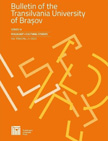
Implicit causality is the property of interpersonal verbs to relate two human or animate entities in such a way that one of the referents is assumed to have caused the action or attitude described by the verb. This assumption, which has been termed bias and which is seemingly rooted in the argument structure of verbs, affects remention and subsequent pronominalization. This paper surveys theoretical and psycholinguistic approaches to causality in language with a focus on implicit causal relations expressed inter-clausally by verbs. It also presents the preliminary results of an off-line sentence-continuation study in which we tested the cross-linguistic and cross-cultural consistency of the implicit causality bias patterns of interpersonal verbs in Romanian.
More...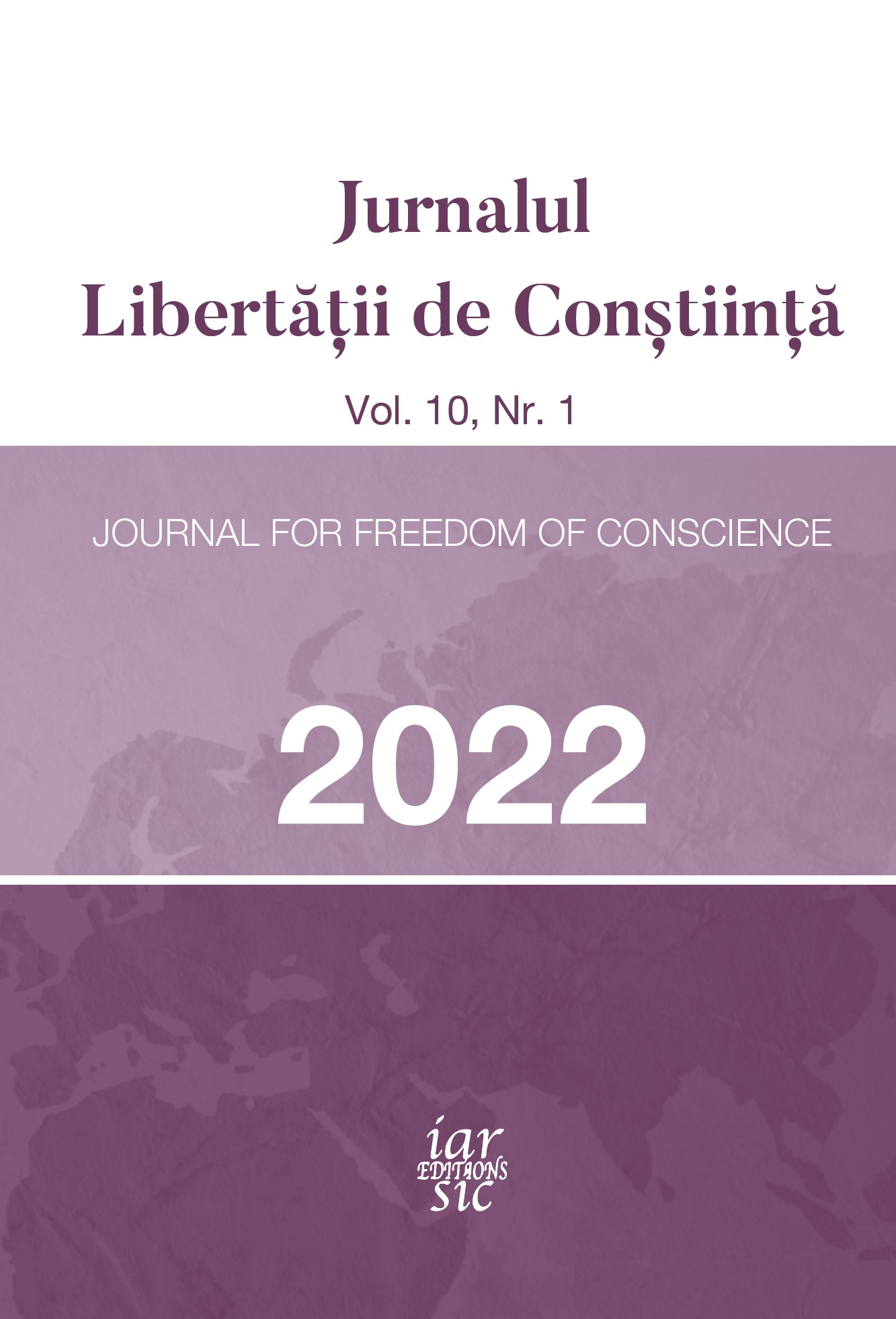
In the following paper, our goal is to present an overview of the sociologic, didactic and religious meaning of the word „value” starting from its base concepts and its configuration. Nowadays the term „value” is intensively used, by being a key concept in areas such as philosophy (the topic of study of axiology, for example, are the values and the value judgement), sociology and psychology. This word is used to denote objects, situations, actions and events (abstract ideas that embody social ideals), as well as to describe their properties: meaning, normativity, utility, and necessity. Given the polysemy of this lexeme, we will make a brief review of its semiotic grid by keeping its perception and influence over the fundamental acts of the human.
More...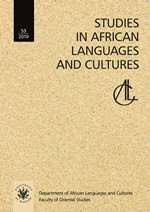
This article seeks to deepen our understanding of the cognitive processes in death euphemisms in Nzema, a Kwa language of Ghana. The article highlights the metaphorical “mappings” across conceptual domains, where the concept of death (target domain) is well understood in terms of more physical events such as journey, departure, return, invitation, continuous sleep, lose a fight, etc. (source domain). It is demonstrated that the Nzema conceptualise death also as retirement, subtraction, bereavement as living in darkness, being missing at the crossroads, burial as hiding/preserving, burying as sowing a seed, coffin as house for an individual, cemetery/grave as better place, place of rest, and corpse as a thing among others.
More...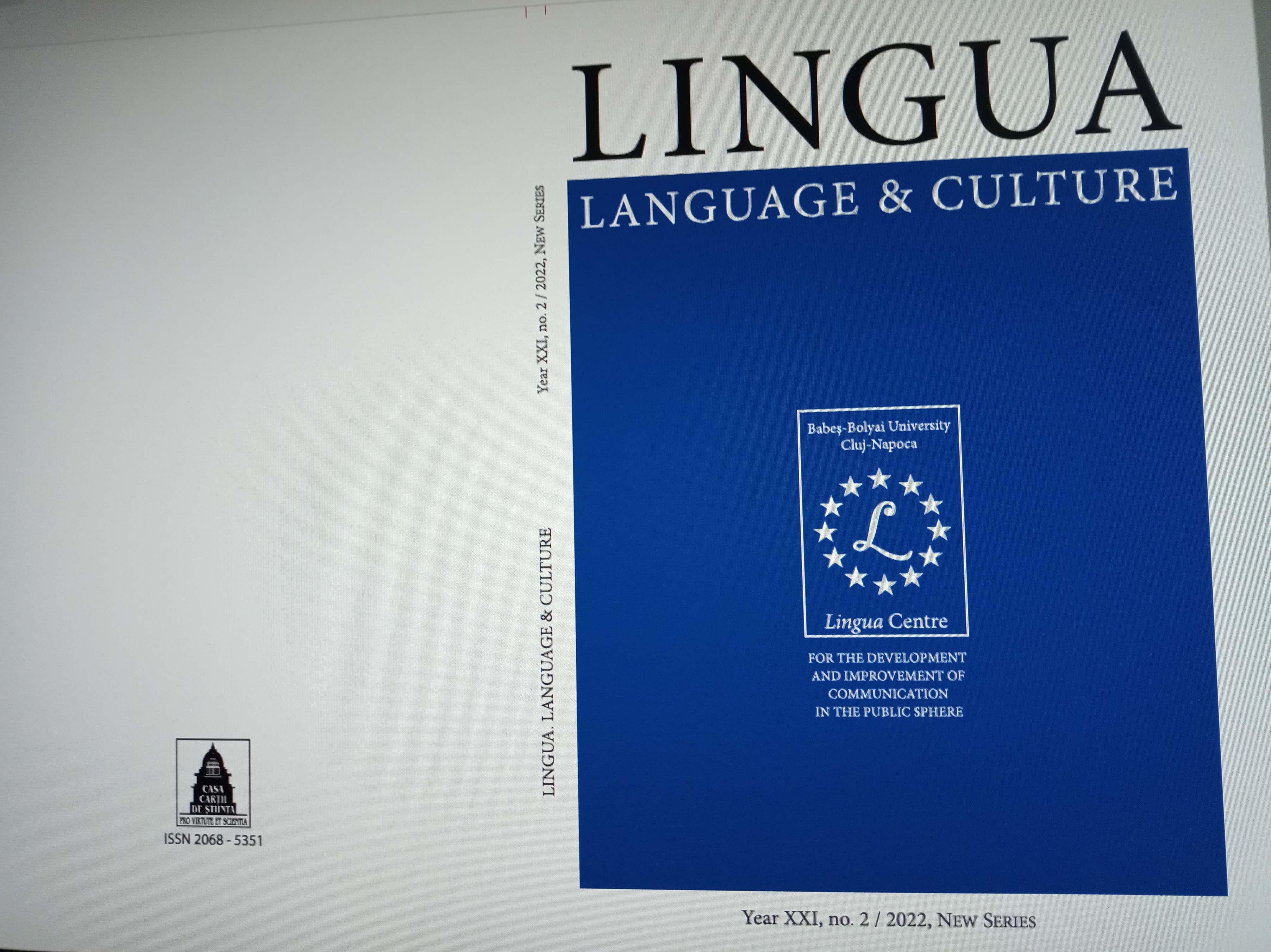
The current paper deals with the functional and structural aspects of collocations while at the same time it explores their socio-cultural features on the grounds of a corpus-based inductive approach. Collocational translation requires in-depth collocational analysis which in turn leads to a tripartite approach based on linguistic, communicative and cultural competence. The meaning of a collocation depends upon the meaning of its constituents so translation becomes more difficult when their figurative meaning is taken into account. Between the untranslatable and easily translatable collocations we come across degrees of translatability depending upon the lexical and cultural congruence between the two languages. But how efortless or how problematic is it to set scientific boundaries? What the paper seeks to explore is some of the strategies used for the translation of verbal collocations in Middle England by Jonathan Coe along with their presentation, attempting to highlight that collocations should not be viewed as mere embellished versions of literal language, but as practical solutions used to fill the void of vocabulary when we are at a loss for the proper translational equivalent.
More...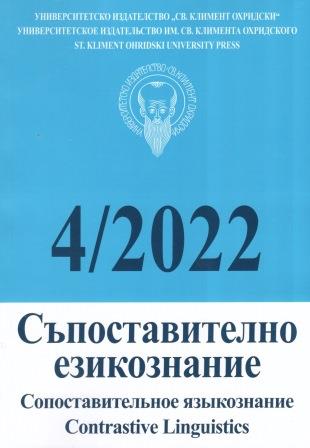
Book Review: Ю. Стоянова. Проблеми на психолингвистиката. София: УИ „Св. Климент Охридски“, 2022. 575 с.
More...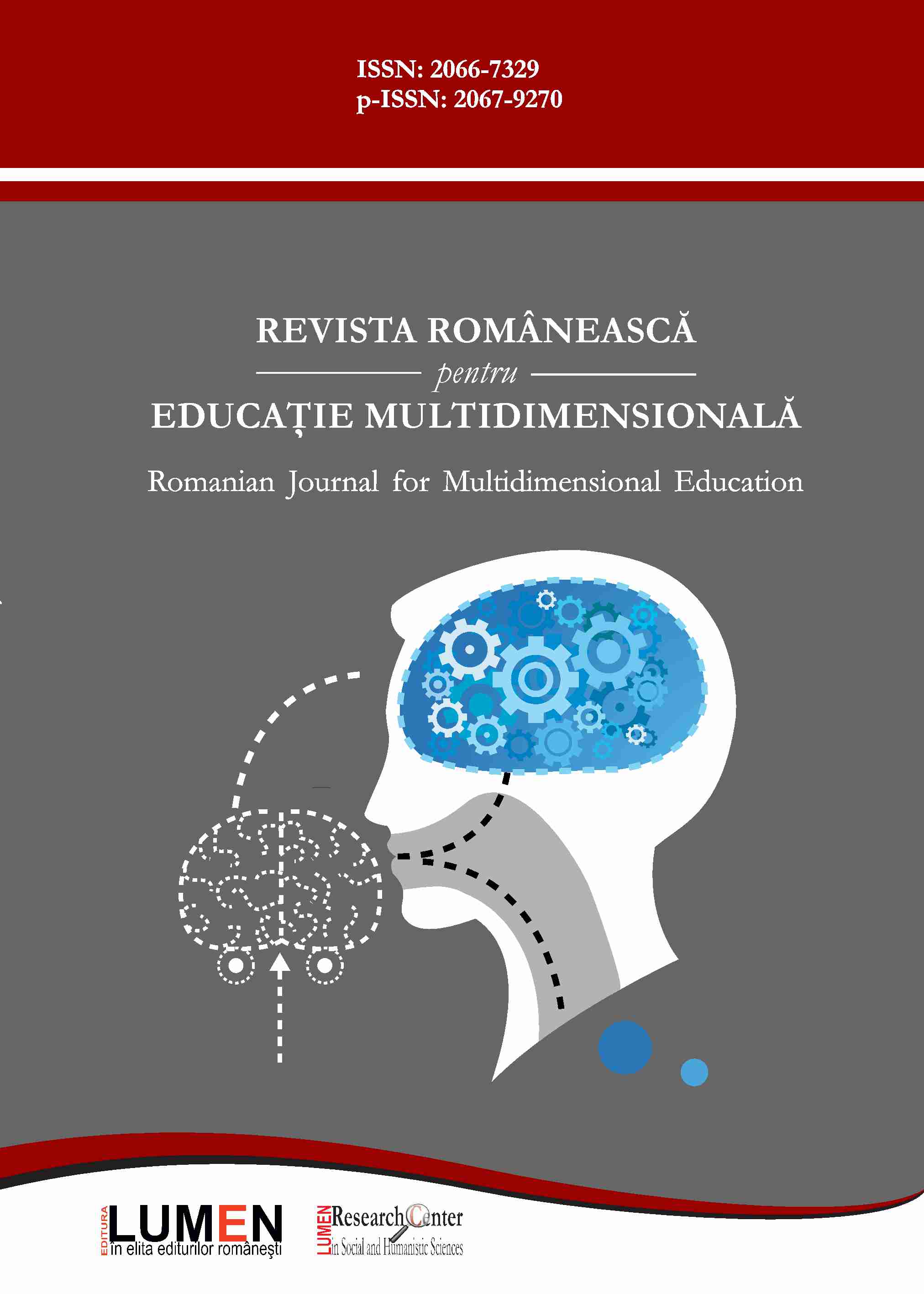
The article covers the issue of formation of rhetorical competence of higher education students: neuropsychological aspect. It is investigated that a university teacher must not only have a thorough knowledge of his subject, but also should have a high level of rhetorical competence. The meaning of the concepts: "competence", "rhetorical competence", "pedagogical rhetoric", "neurolinguistics" is clarified. The contribution of scientists who proposed a neurolinguistic approach in the study of speech disorders has been studied. A review of articles was made by domestic and foreign researchers on the formation of rhetorical competence of higher education seekers through the prism of the neuropsychological aspect. The components of rhetorical activity of students-psychologists are investigated. It is noted that educational training is a powerful tool for the formation of rhetorical competence of higher education students. Some aspects of training by psychologists are highlighted. It is emphasized that psychologists should have a good understanding of neurolinguistic programming. It has been studied that for successful speech behavior a teacher should use both verbal and nonverbal means of communication. It has been found that damage to the left hemisphere of the brain leads to aphasia. Apraxia has been found to be a disorder of the motor analyzer. It has been studied that children with dyslexia have phonological disorders. It has been proven that neurolinguistic knowledge helps teachers to choose strategies for teaching a foreign language to students. The essence of the suggestive technique is clarified. The requirements for a teacher who works on a suggestive method are considered. It is emphasized that the use of the suggestive method in teaching students helps the teacher to eliminate traumatic factors: fear, incommunicability, rigidity. It is proved that the suggestive method is connected with the formation of communicative competence in students.
More...
The article highlights the issue of interdisciplinary links in speech therapy, in particular, the philosophy of language. Given that the number of children with special educational needs is increasing, the relevance of the article is indeed justified. Therefore, it is necessary to analyze the problem in question more in detail. The article aims to a) clarify such concepts as “language”, “philosophy of language”, “hermeneutics”, “speech therapy”, b) analyze an interdisciplinary approach to preventing and correcting speech disorders in children and adults and c) study the causes of such disorders. Research methods include a detailed analysis of scientific sources, as well as a systematic analysis. As shown by the relevant recent work in this area, the interaction of methods from neurology, neurophysiology and neuropsychology contributes to restoring the functional system of language and speech. Speech disorders are mostly typical for people diagnosed with autism, attention deficit disorder, hyperactivity disorder, Huntington’s disease, sclerosis, dementia, and mouth or throat cancer. The novelty lies in the fact that speech therapists should be able to use neurostimulation technologies in the course of corrective work. In conclusion, speech therapy should follow an interdisciplinary approach so that specialists can make an effective diagnosis of speech disorders in children and adults.
More...
The article shows that lexico-semantic innovations in the Ukrainian language system of proper names which are characterized by a specific neurophysiological mechanism of formation require in-depth study. The relevance of the article lies in the fact that lexico-semantic word formation used to be mainly considered in the diachronic aspect, which led to little attention to ergonyms and pragmonyms as relevant classes of proper names. The article aims to analyze lexico-semantic innovations in the context of ergonyms and pragmonyms and determine their role in word formation in the system of naming-related tools in the modern Ukrainian language. Research methods include observations, analogies, analysis, synthesis, linguistic description, component analysis, structural-semantic analysis, statistical methods. The article proves that lexico-semantic word formation is the most active and productive way of replenishing the fund of ergonyms and pragmonyms in the Ukrainian language under the conditions of a transition economy. The main types of lexico-semantic word formation are derivational metaphor and derivational metonymy. They enable the formation of both simple and compound lexico-semantic innovations mostly represented by binary word combinations. Including all layers of vocabulary in the scope of such a type of word formation can bring unlimited prospects of its functioning in the future. The international value of the research implies clarifying the role of lexico-semantic word formation in the naming system of modern Ukrainian, describing important fragments of the lexical structure of the Ukrainian language, systematizing modern lexico-semantic naming models, and determining the ways of activating lexico-semantic substitution. For the first time in Ukrainian linguistics, the research analyzes peripheral classes of proper names in various ways, classifies ergonyms by thematic groups and motivational features underlying the naming unit and reveals the specifics of different semantic groups of Ukrainian pragmonyms.
More...